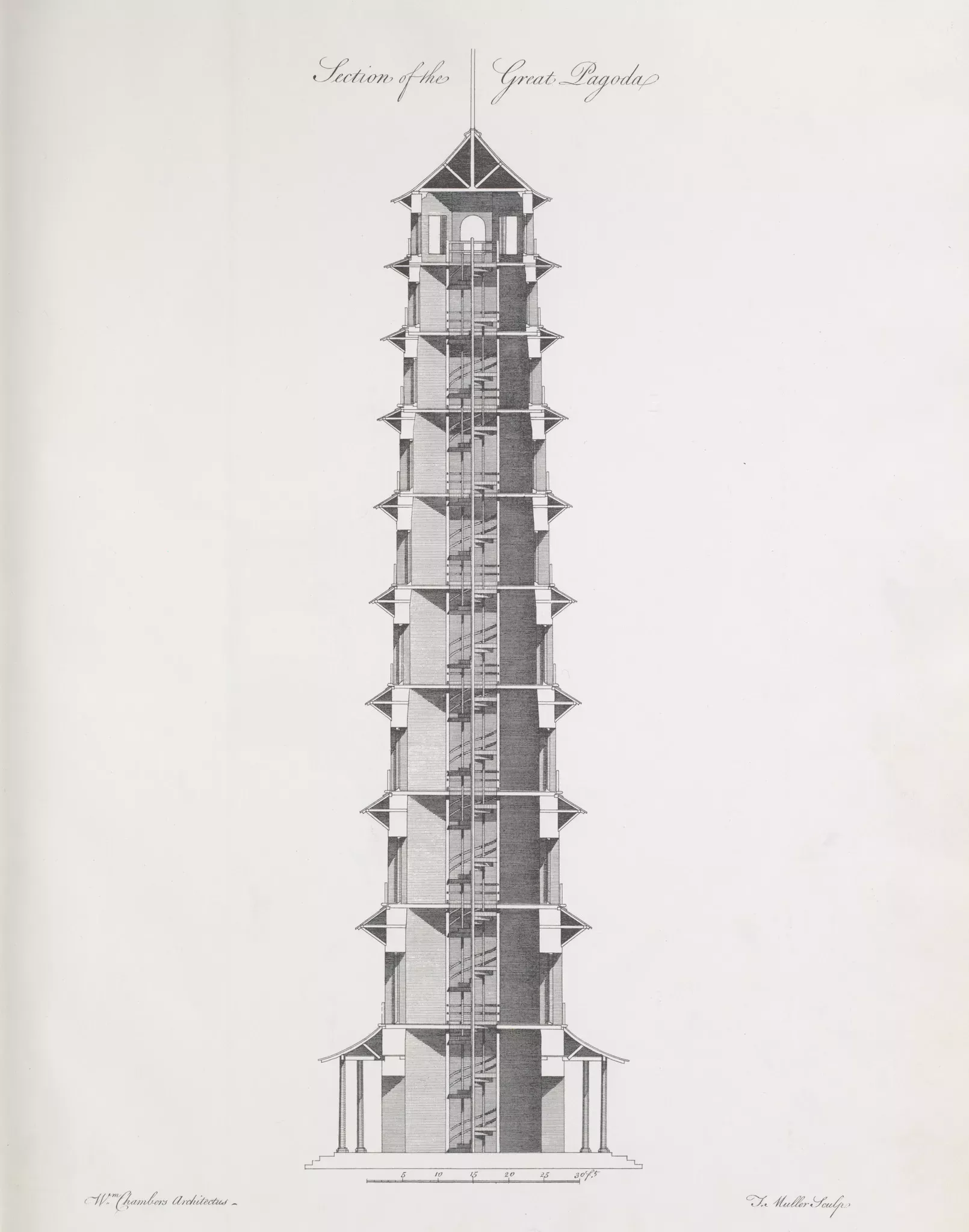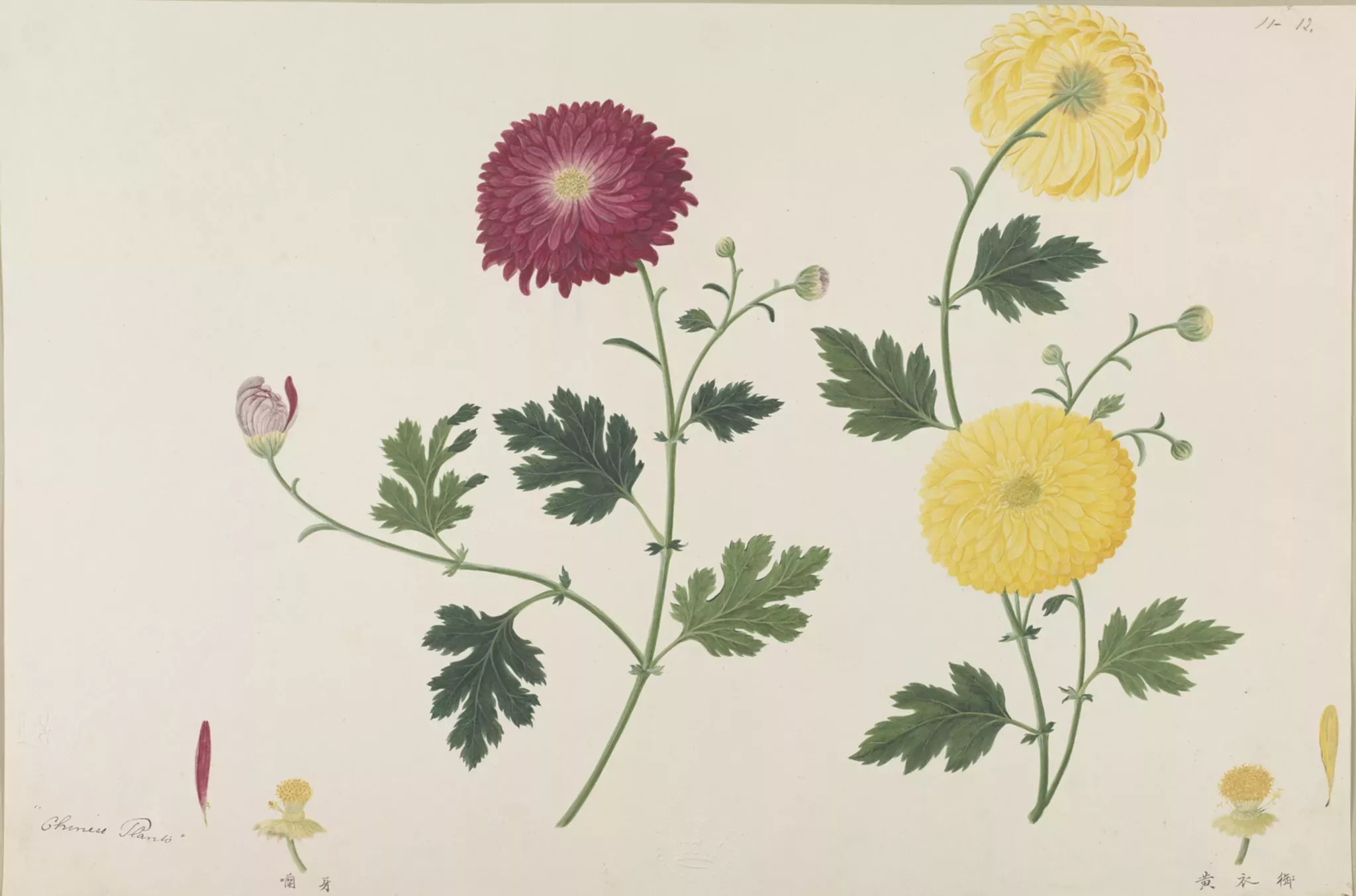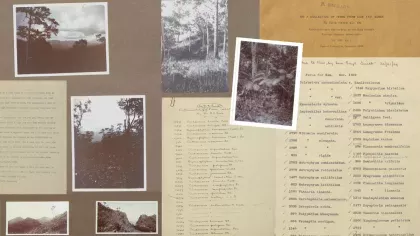3 August 2018
Celebrating the reopening of the Great Pagoda at Kew
In celebration of the reopening of the Great Pagoda after its extensive restoration, our archives hold treasures that reveal more to its story.

Architect to royalty
Sir William Chambers travelled extensively in China and was inspired by the architecture and gardens he saw there. He was employed by Princess Augusta to embellish her gardens at Kew and completed construction of the Great Pagoda in 1762. Chambers wrote several important works, including Designs of Chinese buildings (1757) and Plans, elevations, sections, and perspective views of the gardens and buildings at Kew in Surry (1763). Both titles are part of the library collections in both their original editions and high-quality facsimile reprints (on display).

The cruelty of the caricaturist?
Chambers was apparently not well regarded in all circles, as a caricature by Matthew Darly demonstrates. His Scots/Swedish origins are ridiculed, and he is quite frankly depicted as both brazen and stupid. It’s a little hard to tell whether he’s supposed to be the ringleader of the menagerie or one of its chief exhibits, but either way it isn’t complimentary! It was published by Mary Darly on March 7th, 1773.
The Great Pagoda in context
Two of the items in the display show the Pagoda in its setting within the Gardens: the first is an engraving of “A view of the Wilderness with the Alhambra, the Pagoda & the Mosque…” and the second is a photograph by J.S. Catford, showing the Pagoda framed by an avenue of trees. Sadly, the Mosque and Alhambra are long-gone, but the Pagoda, despite doubts expressed at the time of its construction has endured.
Growing in the shadows
The exhibition includes seven drawings commissioned from Chinese artists by William Kerr, who sent them back to Kew from China. Kerr had been dispatched to China by William Aiton and Joseph Banks in 1803 to collect plant seeds and cuttings, of which he sent almost 250 specimens, most of which had previously been unknown in Europe. The drawings were intended to illustrate how the mature plants would look. It is entirely possible that many of these plants would have grown in traditional Chinese gardens with their own striking pagodas piercing the sky.

Ultralight construction materials!
Probably the most attention-grabbing item in the exhibition is the model of the Pagoda, painstakingly constructed from cork. It is unclear whether it was made as a souvenir or an architectural model, but it is certainly beautiful. It was restored by UCL Masters student Abigail Duckor in 2015.
- Andy Farquhar -
(Library Graduate Trainee)
References
- Chambers, William, Sir (1757) Designs of Chinese Buildings, Gregg International (Facsimile reprint edition).
- Chambers, William, Sir (1763) Plans, elevations, sections, and perspective views of the gardens and buildings at Kew in Surry, Gregg Press (Facsimile reprint edition).
- Cheng, Liyao (1999) Chinese Classical Gardens, Yunnan People's Publishing House.
- Chung, Wah Nan (1982) The Art of Chinese Gardens, Hong Kong University Press.
- Rinaldi, Bianca Maria (2016) Ideas of Chinese Gardens : Western Accounts, 1300-1860, University of Pennsylvania Press.


